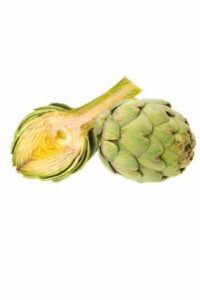Are you living with psoriatic arthritis and looking for natural ways to manage your condition? Look no further! Traditional and lifestyle approaches are the key to naturally managing psoriatic arthritis, and we’ve got all the information you need to achieve relief and balance. Read on to learn everything you need to know about finding a natural approach that works for you!
Understanding Psoriatic Arthritis: Diagnosis, Treatments, and Management
Psoriatic arthritis is more than just joint pain. It is a complex condition that can take a toll on your physical, emotional, and social well-being. As an inflammatory condition, psoriatic arthritis can cause inflammation and swelling in and around the affected joints. If left untreated, it can lead to joint damage, disability, and decreased quality of life. In this blog post, we will discuss everything you need to know about psoriatic arthritis, including diagnosis, treatments, and management strategies to help you achieve relief and improve your overall well-being.
Symptoms and Diagnosis
The symptoms of psoriatic arthritis can differ from person to person, but common symptoms include joint pain, stiffness, and swelling, along with skin changes including red and scaly skin patches. Diagnosing psoriatic arthritis can be challenging, as it can mimic other inflammatory arthritic conditions. However, certain criteria are used to diagnose psoriatic arthritis, which includes a personal or family history of psoriasis or arthritis, skin or nail changes, and positive blood markers.
Imaging tests, such as X-rays and MRIs, can also help show joint damage and inflammation
Some people may experience mild symptoms that only affect a couple of joints, while others may have more severe symptoms that affect many. Although medicine can be used to manage relapses, relying on a single approach to keep your symptoms under control is sub-optimal. Your doctor should encourage you to develop a deeper understanding of health and make appropriate lifestyle changes. By doing so, you can reduce the probability and incidence of future flares. Remember, learning about your condition is the first step to taking control of your health.
Conventional Allopathic Treatments
Treatments for psoriatic arthritis can vary depending on the severity of the disease and the individual’s response to treatment. Over-the-counter pain relievers, such as acetaminophen, may provide temporary relief, but for more severe cases, medication and physical therapy may be necessary.
Non-steroidal anti-inflammatory drugs (NSAIDs), such as ibuprofen and naproxen, can help reduce inflammation and relieve pain.
Disease-modifying antirheumatic drugs (DMARDs), such as methotrexate, can reduce joint damage and stiffness, while biologic response modifiers, such as tumor necrosis factor (TNF) inhibitors, can target specific cells and proteins that cause inflammation.
Management Strategies
Along with medication, several lifestyle changes can help manage psoriatic arthritis symptoms. Exercise is essential for reducing joint pain, stiffness, improving flexibility, and improving overall fitness. Stretching, swimming, and yoga are low-impact exercises that can be beneficial for people with psoriatic arthritis.
Maintaining a healthy diet and managing stress levels can also help manage the symptoms of psoriatic arthritis. A healthy diet rich in fruits and vegetables, lean protein, and healthy fats can help reduce inflammation in the body. Stress management techniques such as meditation, breathing exercises, and mindfulness can help reduce stress and promote relaxation, which can help reduce inflammation.
Alternative options to Consider
While traditional treatments often involve medication and physical therapy, there are several complementary and alternative therapies that can provide relief and improve symptom management.
One such therapy is vagus nerve stimulation, a technique that involves stimulating the nerve that runs from the brain to several major organs.
Herbal remedies
Herbal remedies and functional foods can also be helpful in reducing inflammation and reducing pain. With a proper diet and the use of these therapies, individuals with psoriatic arthritis can find some relief and improve their quality of life. Remember to always consult with a healthcare professional before starting any new therapies or supplements.
The Best Psoriatic Arthritis Diet
One of the most significant benefits of a healthy diet for people living with psoriatic arthritis is that it can help reduce inflammation in the body. Certain foods, like processed meats and sugary snacks, have been shown to increase inflammation levels in the body. On the other hand, foods that are rich in anti-inflammatory properties, such as fruits and vegetables, can help reduce inflammation and pain.
Antioxidants, which are found in foods like berries, dark leafy greens, nuts, dark chocolate, tea, and coffee, can help reduce inflammation and protect the body against oxidative stress. Inflammation and oxidative stress are two key factors that contribute to the symptoms of psoriatic arthritis, so consuming foods that are high in antioxidants can help manage those symptoms.
Berries, in particular, are rich in antioxidants like anthocyanins, which have been shown to help reduce inflammation and lower the risk of chronic diseases such as heart disease and cancer. Dark leafy greens, like spinach and kale, are also high in antioxidants and can help reduce inflammation in the body.[1]
Here are some of the highest antioxidant foods you can incorporate into your diet
Berries
 Berries like blueberries, strawberries, raspberries, and blackberries are full of antioxidants, including anthocyanins. Anthocyanins are powerful polyphenols with potent anti-inflammatory properties.
Berries like blueberries, strawberries, raspberries, and blackberries are full of antioxidants, including anthocyanins. Anthocyanins are powerful polyphenols with potent anti-inflammatory properties.
Anthocyanins are a type of flavonoid that gives berries their vibrant colors and have been linked to better heart health. [2]
One cup of berries can contain up to 10 times the USDA’s recommended daily intake of antioxidants [3]
Berries are an ideal food to incorporate into a psoriatic arthritis diet as they contain key nutrients and only have a few calories. Additionally, the antioxidants within berries guard your cells against free radicals which can cause harm.
Spruce up your breakfast by adding berries to oatmeal, smoothies, or yogurt; add them to salads for a flavorful twist; and tantalize your taste buds with cobblers and pies.
Indulging in an assortment of brightly-colored berries not only satisfies your taste buds but also has numerous health benefits! Make sure to snack on them regularly for a boost of antioxidants and other essential vitamins.
Dark chocolate
Dark chocolate is rich in flavonoids, which are compounds that have been shown to have numerous health benefits.
Flavonoids are powerful antioxidants found naturally in many plant-based foods, such as dark chocolate. Studies have shown that they can help reduce inflammation and protect against heart disease by improving blood vessel function and lowering blood pressure.
Pecans
Pecans are a nutrition powerhouse, packed with antioxidants and essential micronutrients. Their main antioxidant is vitamin E, which can help improve skin health and reduce the risk of chronic inflammation-related diseases.
Vitamin E is a fat-soluble nutrient found mainly in fats and oils. It helps protect cells from oxidative stress caused by free radicals, which can damage cell structure and lead to disease. Studies have shown that higher intakes of dietary vitamin E are associated with improved cognitive function, reduced DNA damage, lower risk of heart disease, and decreased risk for certain types of cancers.
Pecans are an excellent source of dietary vitamin E—just one ounce contains more than 20 percent of your daily recommended intake! In addition to being incredibly high in antioxidants, pecans contain healthy monounsaturated fatty acids that may help reduce bad cholesterol levels and lower your risk for heart disease.
To get the most out of pecans’ nutritional benefits, try adding them to salads or yogurt parfaits for a delicious crunchy topping. They make a great snack on their own too—just remember not to overdo it due to their high-calorie content.
Artichokes

Artichokes are a nutritional powerhouse, high in antioxidants like cynarin and silymarin.[4]
These compounds help protect the liver from disease-causing free radicals and toxins by preventing oxidative damage and promoting antioxidant activity.
Studies have shown that cynarin can reduce levels of bad cholesterol, while silymarin has been found to improve liver function in people with chronic liver diseases. Artichokes also contain prebiotics, which feeds beneficial bacteria in the gut and may boost immunity.
Incorporating artichokes into your diet is easy—they can be steamed, boiled, grilled or roasted for a delicious side dish or salad topping. They also go well in dips, soups and pasta dishes.
Goji berries
Goji berries, bursting with carotenoids and vitamin C, are an excellent source of antioxidants. [5]
These powerful compounds can shield your body from oxidative stress and inflammation (two leading causes of chronic health problems) by working actively to reduce the damage done by free radicals.
Carotenoids are potent pigments that can help protect against the risk of cancer and other long-term illnesses. Moreover, there is evidence to suggest they may be beneficial in preventing age-related vision loss and cognitive impairment. [6]
Additionally, Vitamin C has been shown to bolster immunity while warding off diseases through its powerful antioxidant properties.
Add goji berries to your smoothies, cereals, and salads for a unique sweetness that is only found in nature. No need to worry if fresh goji berries are not accessible either – dried versions of the berry still offer up their wonderful flavor!
Red cabbage
Red cabbage is a nutritional powerhouse, rich in anthocyanins—powerful antioxidants that help reduce inflammation and protect against chronic diseases.[7]
Anthocyanins help reduce inflammation in the body, which may prevent illnesses like diabetes, heart disease, and cancer. They also support healthy digestion and gut health. Red cabbage is also high in fiber, which helps promote digestive regularity and improves overall wellness.[8]
Red cabbage can be enjoyed cooked or raw to reap its full benefits. Try adding it to salads or roasting it with other vegetables for a delicious side dish. You can also toss some into soups and stews or use them as a colorful garnish on your plate.
Spinach
Spinach is overflowing with antioxidants, including lutein which has been scientifically proven to benefit eye health and help guard against age-related macular degeneration. [9]
Lutein is an important nutrient for healthy eyesight, as it helps absorb damaging blue light from digital devices and environmental stressors. It also reduces inflammation in the eyes, which can damage blood vessels and lead to vision loss over time.
Spinach is easy to add to any dish—try adding it to a salad, sautéing it with garlic and olive oil, or blending it into smoothies. You can also use spinach in soups, stir-fries, and casseroles for a delicious and nutritious addition to your meal.
Kale
Kale is a nutritional powerhouse, loaded with antioxidants like vitamin C and beta-carotene.
Vitamin C can fortify your immune system, reduce inflammation, and support healthier skin. Beta-carotene is paramount for promoting both optimal vision and healthy skin while shielding cells from the toxic effects of free radicals.
Cooking or steaming kale unlocks its nutritional potential and makes it easier to digest, so why not add the delectably nutritious vegetable to your next meal? Kale salads are a great option, as is roasting with other vegetables. You could also include this superfood in soups or casseroles for an incredibly nutritious dish!
Beans
Beans can be an invaluable addition to your diet as they are filled with flavonoids and polyphenols, two powerful antioxidants. These dynamic compounds provide a shield against numerous chronic diseases including heart disease, cancer, diabetes, and more. [10]
For those looking to increase their daily intake of fiber and protein, beans are an excellent source. Incorporating them into soups, stews or stir-fries is a great way to create a scrumptious meal in no time! Alternatively, you can substitute meat for seasoned black beans or refried beans in burritos and tacos – adding flavor while providing additional nutrients. Lastly, why not try incorporating these beneficial legumes into salads, veggie burgers, or casseroles?
Tea
Tea ( black and green) are both high in antioxidants and has been shown to have numerous health benefits. Green tea, for example, is high in polyphenols, which have been shown to have anti-inflammatory properties and may reduce the risk of chronic diseases.
One of the main polyphenols found in tea is called theaflavin, which has been shown to have numerous health benefits. For example, theaflavin has been found to have anti-inflammatory properties, which can help protect against chronic diseases like heart disease and cancer. [11]
Another polyphenol found in tea is called catechin.
Catechin has been shown to have antioxidant and anti-inflammatory properties, and some studies suggest that it may help reduce the risk of chronic conditions like type 2 diabetes and certain types of cancer. [12]
Interestingly, the way that tea is prepared can affect its antioxidant content. For example, brewing tea for longer periods of time can increase its antioxidant content, while adding milk to the tea can decrease its antioxidant content.
Weight control and symptom reduction
Another benefit of a healthy diet is that it can help people with psoriatic arthritis maintain a healthy weight. [13] Excess body weight can put additional strain on the joints, which can exacerbate symptoms of psoriatic arthritis. Eating a diet that is high in lean protein, whole grains, and fresh produce can help people achieve a healthy weight, improve their mobility [14], and increase longevity. [15]
A healthy diet can also boost overall energy levels, which can be especially beneficial for people with psoriatic arthritis who may experience fatigue as a symptom of their condition. Eating a balanced diet can provide the body with the nutrients it needs to feel energized throughout the day.
In addition to reducing inflammation, maintaining a healthy weight, and boosting energy levels, following a healthy diet can have a positive impact on overall well-being. People living with psoriatic arthritis may experience anxiety or depression as a result of their condition, and a healthy diet has been shown to improve mental health and reduce symptoms of anxiety and depression. [16]
While there is no one-size-fits-all diet for people with psoriatic arthritis, many experts recommend following a Mediterranean-style diet. This diet is high in fruits, vegetables, whole grains, and healthy fats, and has been shown to have numerous health benefits, including reducing inflammation.
Psoriatic Arthritis and Functional foods
Functional foods are foods that offer additional health benefits beyond basic nutrition, and they can be beneficial for people with psoriatic arthritis. Here is a list of my favorites.
Fatty Fish for psoriatic arthritis

Some foods that may be particularly beneficial for people with psoriatic arthritis include oily fish, like salmon or sardines, which are high in omega-3 fatty acids and have been shown to help reduce inflammation. [17] [18]
Eating fatty fish is an excellent way to get the nutritional support you need if you are living with Psoriatic Arthritis. Omega-3s may also help reduce joint pain and stiffness associated with psoriatic arthritis, as well as improve the overall quality of life.
In addition to omega-3s, fatty fish can provide essential vitamins and minerals such as protein, vitamin D, and calcium. These nutrients can help build strong bones and muscles which are important for mobility and daily activities for those living with psoriatic arthritis. Therefore it’s a great idea to include fatty fish in your weekly meal plan!
Turmeric for psoriatic arthritis
Turmeric is a bright yellow spice native to South Asia that is used in many dishes around the world. It contains the compound curcumin, which has been studied for its potential health benefits due to its anti-inflammatory properties.
Studies have shown that curcumin can help reduce joint pain and stiffness in people with psoriatic arthritis. It does this by inhibiting enzymes involved in inflammation and cartilage degradation, as well as by decreasing levels of inflammatory cytokines such as tumor necrosis factor-alpha (TNF-α). [19]
Curcumin can be easily added to meals with turmeric or taken as a supplement.
Ginger
Like turmeric, ginger has anti-inflammatory properties that can help reduce joint pain and stiffness in people with psoriatic arthritis. It can be consumed raw, dried, or in the form of ginger tea.
While no specific research has been conducted into its effect on psoriatic arthritis, experts suggest that consuming up to 4 g of ginger daily could help manage inflammation and pain related symptoms. Additionally, it is likely safe for most people when taken in this dosage. [20]
The use of ginger may reduce NF-kβ levels in those with psoriasis, and its incorporation into one’s treatment plan could be a viable adjunctive option. [21]
Tart cherries
 Montmorency tart cherries, in particular, provide remarkable anti-inflammatory benefits due to their natural anthocyanins and polyphenols – providing relief to those with arthritis or gout.[22].
Montmorency tart cherries, in particular, provide remarkable anti-inflammatory benefits due to their natural anthocyanins and polyphenols – providing relief to those with arthritis or gout.[22].
Sweet and tart cherries are indeed a great source of vitamin C, which is an important nutrient for immune function and skin health. A serving of sweet cherries provides 18% of the recommended daily value of vitamin C, while red cherries provide 25%. [23]
Vitamin C is an important nutrient for people with psoriatic arthritis, as it also has anti-inflammatory properties that can help reduce joint pain and stiffness.
Studies have shown that people with psoriatic arthritis who consume more vitamin C have lower levels of inflammatory markers in their blood. Vitamin C is also important for collagen synthesis, which is essential for joint health and may help protect against cartilage erosion in people with psoriatic arthritis. [24].
One small study found that cherry pills may improve osteoarthritis pain and stiffness[25]. Another double-blind study suggested that tart cherry juice might help ease pain from arthritis[26].
and a final study has shown that Tart cherries reduce pain and stiffness associated with arthritis and other joint pain disorders[27]
Broccoli
Broccoli is a nutritious powerhouse of a vegetable! Not only is it full of vitamins, minerals, and fiber – it also contains sulforaphane, a plant compound with powerful anti-inflammatory properties. [28]
Studies have shown that sulforaphane can reduce inflammation in the body, making it an ideal food for those living with inflammatory conditions like psoriatic arthritis. Additionally, consuming cruciferous vegetables like broccoli, kale, and Brussels sprouts may provide additional benefits such as cancer prevention and improved digestion.
What’s more, broccoli is incredibly versatile and easy to incorporate into your weekly meal plan. So make sure you add some broccoli to your shopping list.
Garlic
Garlic contains compounds like allicin, which have anti-inflammatory properties. Consuming garlic may help reduce joint pain and inflammation in people with psoriatic arthritis.
According to several sources[29][30][31][32], consuming fresh garlic may help reduce joint pain and inflammation in people with psoriatic arthritis. Garlic contains diallyl disulfide, an anti-inflammatory compound that can help fight inflammation and may even help prevent cartilage damage from arthritis.
Opting for fresh garlic from the grocery store is recommended, as preservatives used in bottled or powered forms of garlic can lessen its inflammation-fighting capabilities.
Allicin, which is a compound found in garlic, has been shown to have numerous health benefits, including anti-inflammatory properties.
Studies have shown that allicin can help improve the epidermal structure by inhibiting excessive proliferation and reducing apoptosis of keratinocytes. This can be beneficial for people with psoriatic arthritis, as the condition can cause excessive skin cell growth and inflammation. [33]
In addition to regulating keratinocyte growth, allicin has also been shown to reduce the secretion of inflammatory cytokines. Cytokines are proteins that are involved in the immune response, and excessive cytokine production is thought to contribute to inflammation and joint damage in people with psoriatic arthritis.[34]
Walnuts
 Walnuts are a unique type of nut because they are high in omega-3 fatty acids, which are a type of polyunsaturated fat that is important for overall health. Unlike other nuts, which are usually high in mono- and polyunsaturated fats, walnuts contain a significant amount of alpha-linolenic acid (ALA), which is a type of omega-3 fatty acid.
Walnuts are a unique type of nut because they are high in omega-3 fatty acids, which are a type of polyunsaturated fat that is important for overall health. Unlike other nuts, which are usually high in mono- and polyunsaturated fats, walnuts contain a significant amount of alpha-linolenic acid (ALA), which is a type of omega-3 fatty acid.
Studies have shown that consuming walnuts or walnut oil can have numerous health benefits, including lowering blood pressure and reducing the risk of heart disease. Research conducted by nutrition scientist Sheila West at Pennsylvania State University has shown that a daily diet including walnuts or walnut oil can lower resting blood pressure and blood pressure response to stress.
This can be beneficial for people with psoriatic arthritis, as high blood pressure is a common complication of the condition. [35]
In addition to lowering blood pressure, consuming walnuts and flax oil has been shown to reduce levels of C-reactive protein (CRP), which is a marker of inflammation that is linked to arthritis and heart disease. Inflammation is a key factor in psoriatic arthritis, so reducing inflammation levels can help manage symptoms of the condition and reduce the risk of complications.
Walnuts can be easily incorporated into a balanced and healthy diet. They can be eaten as a snack or added to salads, oatmeal, or yogurt for a tasty and nutritious boost. However, it’s important to note that walnuts are high in calories and should be consumed in moderation as part of a balanced diet.
Homeopathy
Homeopathy is a natural form of medicine that focuses on individualized treatments and uses diluted preparations of natural substances. Some homeopathic remedies that may help alleviate symptoms of psoriatic arthritis include Rhus Toxicodendron, Bryonia alba, and Apis mellifera. [36]
Homeopathy is also considered a potential treatment option for psoriatic arthritis, as it can provide relief by treating the underlying cause of the condition [37]
It’s important to consult with a qualified homeopathic practitioner to determine the best course of treatment for your specific case. While more research is needed on the effectiveness of homeopathy for psoriatic arthritis, many individuals have reported positive results and improved quality of life.
Vagus Nerve Stimulation
Vagus Nerve Stimulation (VNS) is a therapy that uses electrical pulses to stimulate the vagus nerve in order to reduce inflammation and ease pain associated with Psoriatic Arthritis. [38] This type of treatment has been found to be particularly helpful for those who don’t respond well to traditional treatments such as medications, diet, physical activity, and lifestyle changes.
VNS works by sending electrical pulses from an implantable device directly into the vagus nerve. The pulses help modulate the response of the autonomic nervous system, reducing inflammation and helping decrease pain levels. VNS can also reduce fatigue, increase the range of motion, and improve the overall quality of life for those living with psoriatic arthritis. [39]
Meditation and the vagus nerve

Meditation is one of the best ways to stimulate the vagus nerve. As the longest cranial nerve in our bodies, the vagus nerve plays a key role in modulating heart rate, digestion, and muscle control. [40]
Meditation helps activate this nerve by providing a sense of calm that reduces stress and anxiety levels. It’s also believed that it increases overall well-being. When your body is relaxed, it sends signals to your brain that allow your sympathetic nervous system (the part of your autonomic nervous system responsible for activity) to rest so that your parasympathetic nervous system (which controls rest and relaxation) can take over.
Not only can meditation stimulate the vagus nerve, but it can help improve sleep quality and reduce symptoms associated with depression. So give it a try today and encourage your body to relax!
Conclusion
When it comes to managing symptoms of psoriatic arthritis, there are a variety of treatment options available.
Including walnuts in your daily diet can provide additional beneficial nutrients, while homeopathic remedies may address the root of your condition. Vagus Nerve Stimulation (VNS) is another potential option that has been found to reduce inflammation and ease pain associated with Psoriatic Arthritis.
Finally, meditation is an effective way to stimulate the vagus nerve while providing a sense of calm that reduces stress and anxiety levels as well as improving sleep quality and reducing depression symptoms. All these treatments should be discussed with a qualified practitioner before beginning any type of regimen in order to determine what will work best for you.
If you would like to find more information on natural approaches to inflammatory disease why not hop over to our superfoods section to find out more?
Have you tried any of the remedies above? If so feel free to drop us a comment in the box below!


